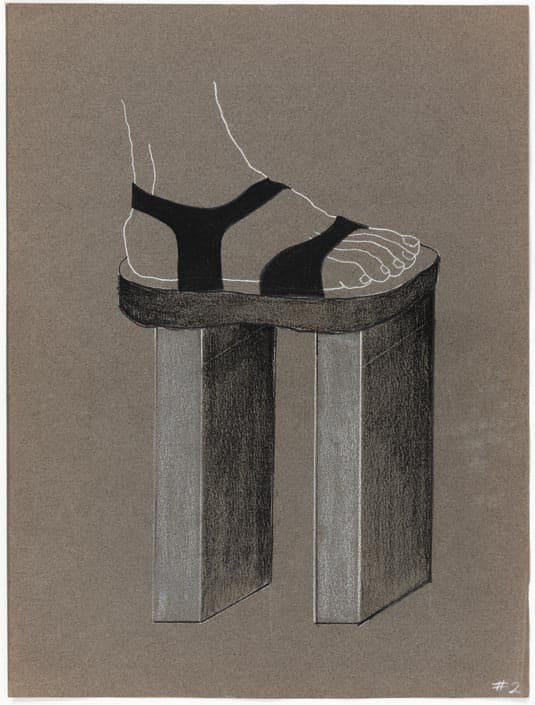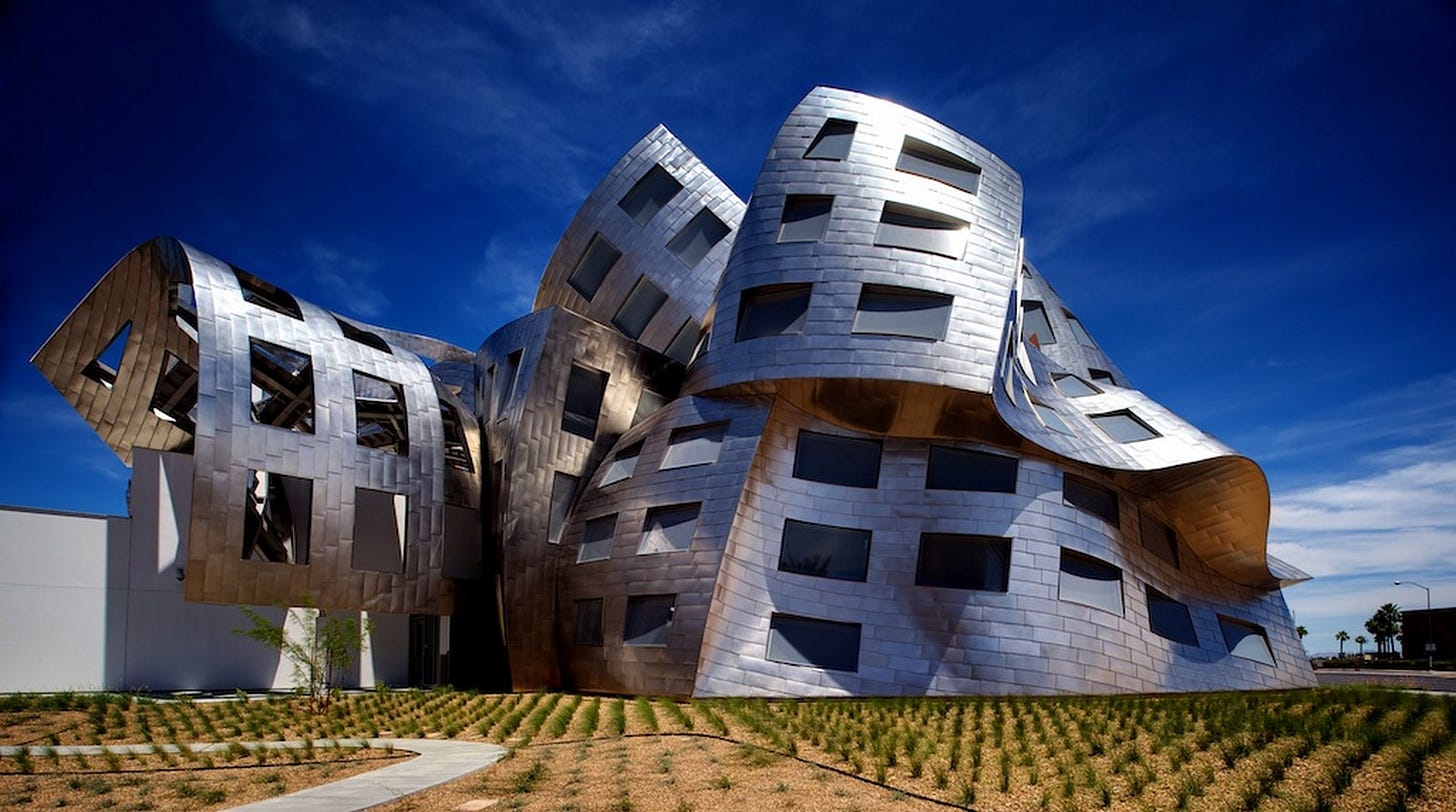Tiny beings, and something utterly beyond our control
A book review of Victor Papanek’s 1995 "The Green Imperative"
I recently bought a book called The Green Imperative on Amazon for 0.10 cents. Written in 1995, it’s a prophetic manifesto on how architects have a moral imperative to design with nature in mind. Victor Papanek's arguments are spookily similar to those that have come into fashion today: the environmental impacts of plastic, the need for “Green Design,” the scandal of cities built for cars, and the value of indigenous knowledge for sustainable architecture.
The price tag is probably a good representation of how much sustainable adaptive architecture was valued in 1995. But surely his words are worth more today.
Victor Papanek, the avant-garde designer and educator behind the book was known for advocating ecologically responsible design of everything from large-scale infrastructure to the plastics used for packaging. Papanek spent extended time learning from the Balinese, Navajo, and Inuit peoples.
In the book, he is frustrated with simplistic solutions to climate change. He says that the idea that environmental issues can either be solved entirely with technology, or that nature will simply fix itself are both “ecologically illiterate” — potentially implying that these solutions only respond to our fears rather than the avalanche of issues to come. He adds that while the earth might, in fact, have the capacity for repair, that theory doesn’t include the continued existence of humans on it.
Instead, he advocates a spiritual approach to design, one that empathizes with the impact we’ve had on the earth and that places small-scale, individual change at the heart of the movement.
This is a somewhat controversial perspective in today’s world, which is currently clinging for life onto the promise that geoengineering will save us all. Many critics would argue that we’ve already opened Pandora’s Box: We’ve reversed and dammed rivers, reclaimed land, killed hundreds of species, etc. We can’t just throw up our hands and stop now.
However Papanek felt that design was just as likely to inflict harm than it was to remedy it. And perhaps in the mid-1990s, the still relatively temperate seasons and resulting lack of urgency made this assertion more true.
He quotes a New Yorker article, which talks about the naivety of 1989 laws passed in the city of Irvine, California. The laws intended to restrict the sale of chlorofluorocarbons (CFCs) inside city limits (CFCs are what tore apart our now healing ozone layer).
“It’s idealistic, even quixotic, for little Irvine to take responsibility for the sky,” the excerpt says.
But the quote adds that Irvine never intended to take responsibility for the sky.
“Irvine’s step does not come anywhere near solving the problem of ozone depletion, but the Irvine City Council did not claim that it would: so large is the sky and so small is Irvine that the relationship of the city to the problem is automatically acknowledged as that of tiny beings to something utterly beyond their control. In this acknowledgment, true scale is recovered, and with it, effectiveness. The problems of the environment are beyond the power of Irvine to solve, but because the city took responsibility where it could, it is no longer helpless.”
Papanek is the original advocate of individual action. He goes so far as to say that smaller action is actually better — safer — than larger. “Only if our intrusions are modest in scale are the changes of major miscalculations reassuringly remote.”
Of course, 1995 had the luxury of time in a way that 2023 does not. But his words are surprisingly hopeful to the mere climate journalist nonetheless.
Papanek draws a straight line between an individual’s belief in ecologically responsible design and their level of hope for the world. He does this by referring to the period of Deconstructivism in the 1980s. The movement is defined by fragmentation and reinterpretation. It was highly influenced by the literary movement, Deconstruction, preached by Jacques Derrida, who aimed to deconstruct text into its fundamental binaries. Derrida uprooted traditional analysis and reevaluated the idea that there exists a single optimal reading of any text. Basically, it asked readers to wipe their assumptions clean and re-engage with texts as though there is no right way to read them.
In architecture, this meant breaking away from historical context, society, and technological tradition in order to create something contemporary, non-linear, and destabilizing — to redesign meaning. Think the Jewish Museum in Berlin, the Pritzker Pavilion in Chicago, the Beijing National Stadium, or this incredible center for brain health in Las Vegas.
But to Papanek this tore architecture away from its context and “deform[ed] historical reality by claiming to relate to current conditions in society.” He writes that “it turn[ed] us against our own past and against nature” and that this ultimately leads to a feeling of nihilism in the individual.
This is what he’s pushing against in his book. He attempts to position designers as teachers who inform and influence infrastructural change through a consciousness of history, nature, and culture. He wants us to be entirely connected to meaning, rather than willfully ignorant of it. But he’s not poisoned by the fear or narcissism that results in a “go big or go home” mentality.
He advocates humility among designers — a humility that approaches design based on objective aspects of climate and ecological use of materials, as well as cultural and bio-regional factors to construct a suitable building. In other words, he advocates a gentler touch.
He proposes a worldview focused on products and designs that “age gracefully” and encourages the socio-economic-political matrix to think twice before creating new things, even if they seem sustainable.
If we consume more sustainable-seeming products, we’re still failing to address the harm of over consumption. Yes, a canvas bag is better than a plastic one, but 10 canvas bags certainly aren’t. This is the same with climate change adaptation in general — sometimes the best thing to do is simply not to build, even if whatever you were planning would function sustainably once completed.
Papanek gleaned the foundation of this wisdom from the Balinese. He poetically summarizes how Bali, which is defined by the ever-present threat of a volcanic eruption, showed him the value of impermanence.
“The beautiful landscape that you did not photograph probably lingers more strongly in your mind than those you tried to freeze in time,” he writes. “The unique piquancy of the unrepeatable may be the reason why the Balinese routinely spend as much time on constructing an elaborate temple offering of fruit, blossoms, and rice to last only for hours or days as they would on carving a stone statue that might endure for centuries.”
Earth is not part of this battle between humans and the harm we’ve done. The mountains, the seas, and the land will exist with or without our meddling. It is our buildings, our civilizations, and our memories that are in this fight. Papanek’s spiritual perspective reminds us that nature wasn’t designed for us; and if we can re-think it — design within the limitations of the materials provided — we may not only avoid mass destruction, but also find a little more meaning in our lives along the way.
“When everything is temporary,” he says. “It is life that becomes lasting.”
*All credit goes to the ever-curious Kat Manshreck for the book recommendation.







Great read! 0.10 cents well spent!!